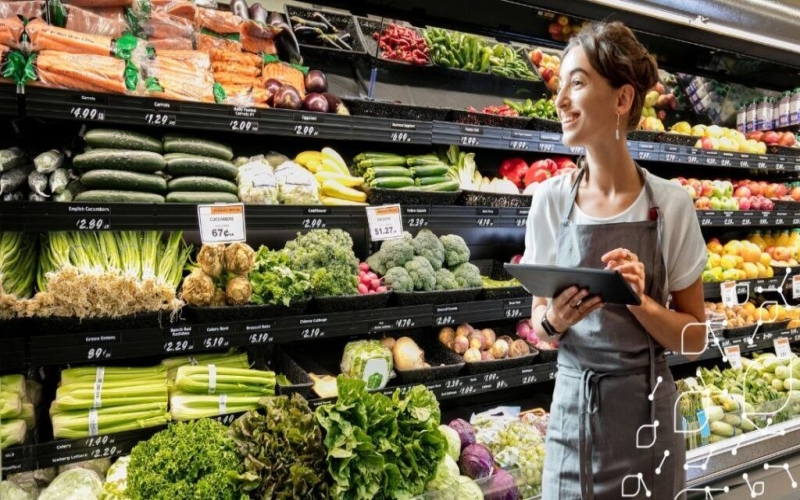In today’s competitive retail environment, supermarkets face the challenge of maintaining high efficiency while delivering exceptional customer service. From inventory management to staff training, numerous facets contribute to a store’s performance. Here are key strategies to help you maximize your supermarket’s efficiency and enhance overall performance.
1. Optimize Store Layout and Design
A well-organized store layout is crucial for efficiency. Start by analyzing customer flow and ensuring that high-demand items are easily accessible. Implementing a logical layout that guides customers through your store can reduce shopping time and increase sales.
For example, placing frequently purchased items like bread and milk at the back of the store encourages customers to pass by other products, potentially increasing impulse buys. Additionally, clear signage and well-defined sections help customers find what they need quickly, reducing frustration and improving their shopping experience.
2. Implement Advanced Inventory Management Systems
Effective inventory management is vital for reducing waste and ensuring product availability. Modern inventory management systems use real-time data to track stock levels, predict demand, and automate reordering processes. By integrating these systems, you can minimize stockouts and overstock situations, which helps in maintaining optimal inventory levels.
For instance, utilizing a system that tracks sales patterns and seasonal trends can help you anticipate demand more accurately. This way, you can adjust orders and stock levels accordingly, leading to reduced waste and increased profitability.
3. Invest in Employee Training and Development
Your staff plays a significant role in the efficiency of your supermarket. Investing in comprehensive training programs ensures that employees are well-versed in their responsibilities and can perform their tasks efficiently. Training should cover not only customer service but also operational procedures and emergency protocols.
Moreover, fostering a positive work environment and providing opportunities for career development can boost employee morale and productivity. When employees are motivated and skilled, they contribute more effectively to the store’s overall performance.
4. Embrace Technology for Streamlined Operations
Technology can significantly enhance the efficiency of supermarket operations. Point-of-sale (POS) systems, for example, streamline checkout processes and provide valuable data on sales and customer preferences. Modern POS systems often come with features like inventory tracking, customer relationship management, and real-time reporting, which can improve decision-making and operational efficiency.
Additionally, incorporating self-checkout kiosks can reduce wait times and free up staff to assist customers in other areas. Implementing digital signage for promotions and product information can also help customers make informed decisions quickly.
5. Enhance Supply Chain Efficiency
A well-managed supply chain is crucial for maintaining store efficiency. Building strong relationships with suppliers and negotiating favorable terms can help ensure timely deliveries and reduce costs. Regularly reviewing supplier performance and exploring alternative options can also contribute to better supply chain management.
Consider implementing just-in-time (JIT) inventory practices to minimize storage costs and reduce the risk of excess inventory. JIT practices require close coordination with suppliers and accurate demand forecasting but can lead to significant cost savings and improved efficiency.
6. Focus on Energy Efficiency
Energy costs are a major expense for supermarkets. To achieve significant long-term savings, consider investing in energy-efficient lighting, refrigeration systems, and HVAC units. Regular maintenance of equipment, including reach-in cooler repair in Hawaii, is also essential for energy conservation. Adopting energy-saving practices and technologies not only reduces your store’s operational costs but also minimizes its carbon footprint.
Consider using programmable thermostats and LED lighting to optimize energy use. Regularly monitoring energy consumption can help identify areas for improvement and ensure that energy-saving measures are effective.
7. Prioritize Customer Service
Efficient operations are not just about managing resources; they also involve providing excellent customer service. Training staff to assist customers promptly and courteously can enhance their shopping experience and encourage repeat business. Implementing customer feedback systems, such as surveys or suggestion boxes, can provide valuable insights into areas for improvement.
Additionally, maintaining clean and organized store environments contributes to a positive shopping experience. Regularly checking for and addressing customer complaints ensures that issues are resolved quickly and effectively.
8. Monitor and Evaluate Performance
Continuous monitoring and evaluation are essential for maintaining and improving efficiency. Regularly reviewing key performance indicators (KPIs) such as sales figures, inventory turnover, and customer satisfaction scores can provide insights into your store’s performance. Use this data to identify trends, set goals, and make informed decisions.
Conducting periodic performance reviews and audits can also help identify areas where efficiency can be improved. Encourage feedback from employees and customers to gain a comprehensive understanding of your store’s strengths and areas for development.
Conclusion
Maximizing your supermarket’s performance involves a multifaceted approach that includes optimizing store layout, leveraging technology, enhancing employee training, and focusing on customer service. By implementing these strategies, you can improve operational efficiency, reduce costs, and create a better shopping experience for your customers. Embracing a proactive approach to efficiency will help your supermarket stay competitive and thrive in today’s dynamic retail landscape.

